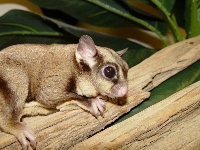Sugar Glider Enrichment
Sugar gliders are best to get around 8-12 weeks after they emerge from the mother’s pouch. This is the best age to socialize them with humans and get them used to being handled. The process may take many weeks to fully socialize them to humans. Sugar gliders live for about 7-10 years in captivity but have been known to live as long as 12-15 in some cases. They are nocturnal in the wild, however they can adjust to any schedule in captivity.





